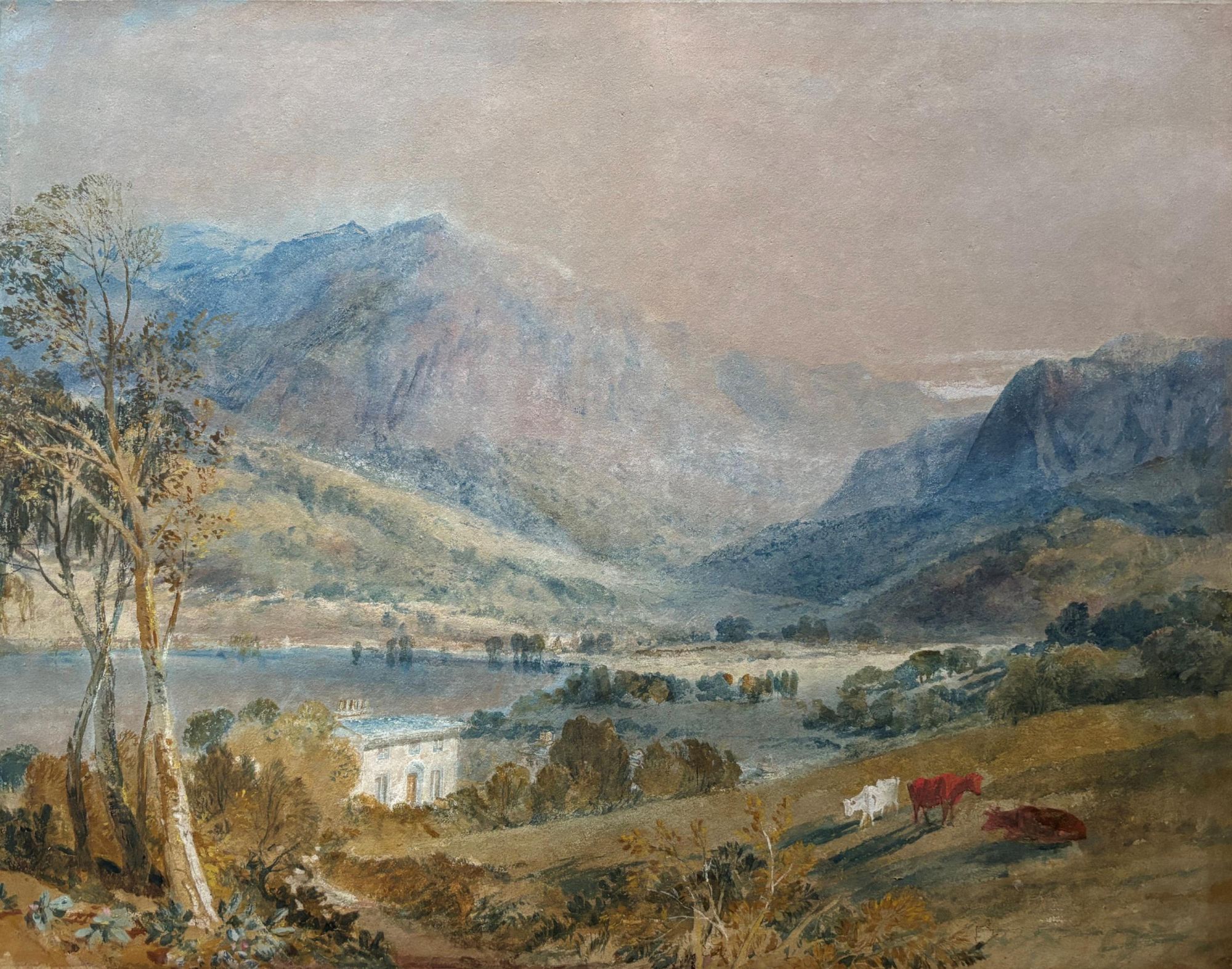Tent Lodge, Coniston Water, Lake District
Tent Lodge, Coniston Water, Lake District
Joseph Mallord William Turner, R.A. (1775-1851)
Tent Lodge, Coniston Water, Lake District
Watercolour and bodycolour on buff paper
50.2 by 65.4 cm., 19 ¾ by 25 ¾ in.
Provenance:
Commissioned from the artist by Walter Fawkes, Farnley Hall (1769-1825);
By descent to Francis Hawkesworth Fawkes (1796-1871);
By descent to Ayscough Fawkes (1831-1899);
By descent to Major Frederick Hawkesworth Fawkes (1870-1936);
F.B. Hart-Jackson, Ulverston;
With Thos. Agnew & Sons, London, where bought in the 1960s;
By descent to the present owners
Literature:
A.J. Finberg, Turner's Water-Colours at Farnley Hall, The Studio, 1910, ill. pl. X as `Coniston Lake and Old Man';
Andrew Wilton, J.M.W. Turner - his Life and Art, 1979, no.553 as untraced
Exhibited:
London, 45 Grosvenor Place, Collection of Watercolour Drawings in the possession of Walter Fawkes, 1819
This is one of a group of five watercolours of the Lake District commissioned from Turner by his friend and patron Walter Fawkes (1769-1825). Fawkes was one of Turner's earliest patrons and from 1815 the artist was a regular visitor to Farnley, the Fawkes family home near Otley on Wharfedale, Yorkshire, sometimes staying for months at a time. By the time of his death in 1825, Fawkes owned over 250 watercolours and several oils by Turner, the largest private collection of his work ever assembled. Many of the interiors of the house drawn by Turner are still at Farnley Hall. A group of Turners from the house were sold at Christie's in 1890 and seventeen studies of birds were bought by Leeds City Art Gallery in 1985. The present watercolour was still recorded at Farnley by A.J. Finberg in 1912.
Walter Fawkes was born at Hawkesworth Hall near Guiseley and inherited Farnley Hall in 1792. He was active in the whig party and prominent in the anti-slave trade movement as well as being MP for the county of York in 1806-7. He was also a keen countryman working on improving his estates and breeding shorthorn cattle as well as forming a park of deer, zebra and hogs at Caley Hall. He is probably best known today for his patronage of Turner. After Fawkes's death in 1825, it is said that Turner `could not speak of the shores of Wharfe', the river which the house overlooks, `but his voice faltered' (The Works of John Ruskin, edited by Cook and Wedderburn, 1903-12, vol. XII).
This is a view looking north-west across the top of Coniston Water. Tent Lodge, which still stands today, was built on the spot where a tent was put up for Elizabeth Smith in 1805 for her to enjoy the scenery from as she was dying from consumption. Alfred Tennyson spent part of his honeymoon in the house in 1850 where he was visited by Matthew Arnold, Thomas Carlyle and Edward Lear and composed `The Princess'. The Tennysons returned in the summer of 1857 when Charles Dodgson, later to find fame as Lewis Carroll, was among their guests. Turner may have visited the Lakes in 1815 but there is no record of such a trip so the present work may be based on a sketch from his 1797 tour.
Stylistically this is typical of Turner's Farnley watercolours which are freely handled with extensive use of bodycolour. Others from the aforementioned group of Lake District views are `Ullswater Lake from Gowbarrow Park' (Whitworth Art Gallery, University of Manchester), `The Old Man, Coniston Lake' (Private Collection) and its near pair `Coniston Water, with Tent Lodge' (Fitzwilliam Museum, Cambridge). The more finished `Windermere', signed and dated 1821, is in the Wordsworth Trust collection at Dove Cottage.

